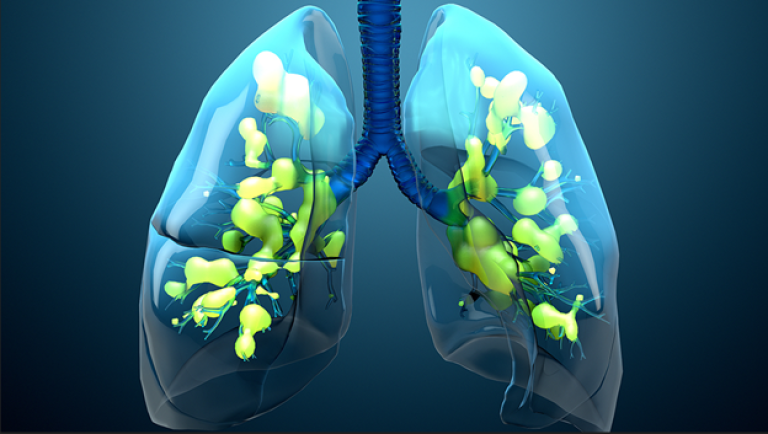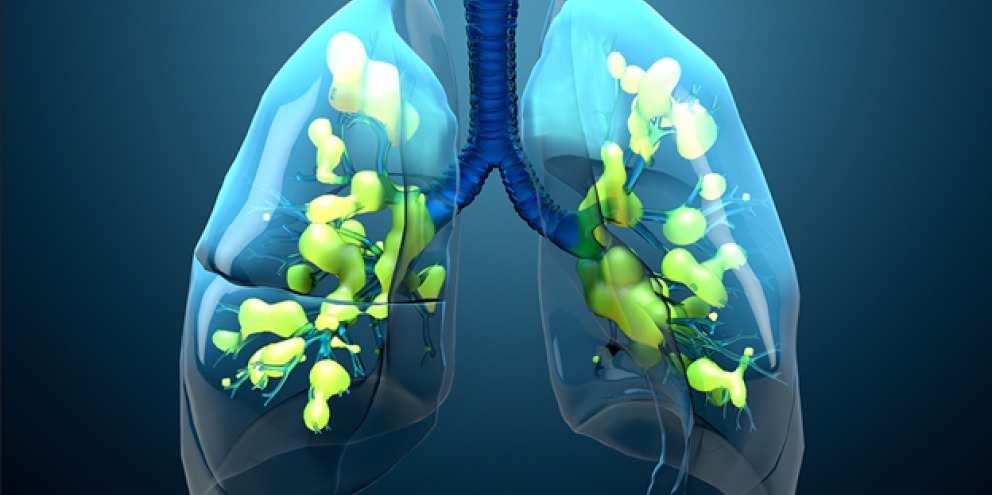
Airway pressure release ventilation (APRV) is a mode of ventilation prevalently used for patients suffering from Acute Respiratory Distress Syndrome (ARDS). Typically, APRV is an invasive, mechanical and open-lung mode of ventilation, which encourages spontaneous breathing, and utilizing longer inspiratory durations. This results in incremented mean airway pressure, which in turn, enhances oxygenation.
Yet, despite this clear benefit, there is still a question as to whether or not APRV’s benefits are enough to outweigh its risks.
In this article, we’ll take a look at the issues surrounding ARDS, which not only make it such a dangerous condition for patients, but also difficult for physicians to treat. We’ll also delve into the pro/con debate as to whether or not APRV is an ideal ventilation mode for ARDS, including the risks and benefits associated with utilizing this ventilation mode to care for ARDS patients.
Background of Airway Pressure Release Ventilation (APRV)
According to Swindin et al., “APRV is a pressure-controlled mode of ventilation that delivers an almost continuous positive pressure with intermittent, short, time-cycled releases at lower pressures.”1 Because of this, APRV may offer special physiological merits over other commonly used ventilatory modes.
APRV mode encourages spontaneous ventilation, which increases the mean airway pressures to enable open-lung ventilation1. Originally, the term APRV was delineated by Stock and his colleagues in 1987, wherein he illustrated that arterial oxygenation coupled with carbon dioxide removal were enhanced utilizing APRV compared with the utilization of intermittent positive-pressure ventilation (IPPV).1
Because of this, the use of APRV has increased, especially in the clinical management of patients suffering from ARDS, as well as in those with severe acute respiratory failure (SARF).
A Background of Acute Respiratory Distress Syndrome (ARDS)
In order to better understand the risks and benefits of APRV in ARDS treatment, it’s useful to first delve into the condition itself.
ARDS, according to the Mayo Clinic, “is a condition that occurs when fluid builds up within the tiny and elastic air sacs in the lungs. This fluid prevents the lungs from collecting adequate air, which translates to less oxygen reaching the bloodstream.”2 Fundamentally, this strips the oxygen from the body’s organs needed to function.
One of the most common symptoms of ARDS is shortness of breath, which normally develops within few hours to several days after a lung infection or precipitating injury2. Typically, the syndrome occurs in individuals that are already chronically ill or those who have experienced a significant injury.
APRV Benefits in ARDS Treatment
Research describes APRV as an inverse ratio ventilation type, which combines, time-cycled, time-triggered and pressure-limited compulsory breaths with spontaneous breaths throughout the ventilatory cycle.3 APRV encompasses a simple and effective method of ventilation for ARDS patients.
However, currently there exists no robust evidence suggesting its superiority above other prevalent ventilatory modes in relation to hemodynamics, patient comfort, mechanical ventilation duration, regional blood flow and oxygenation4.
Inherently however, APRV implementation in ARDS treatment has been shown to provide multiple benefits and advantages over conventionally applied ventilation strategies as laid out below.
APRV enhances ventilation-perfusion matching
Airway pressure release ventilation curbs alveolar over-distension by ideally matching the lung volume with that of the delivered gas. According to an experiment on pulmonary ARDS in a rat model, contrasted against utilizing volume-regulated ventilation, APRV resulted in less amphiregulin expression, which is a protein released during alveolar stretch3.
More importantly, since APRV allows patients to breathe spontaneously, they can alter the volume of gas delivered through taking smaller or larger inhales when needed. In turn, this enhances ventilation-perfusion matching coupled with minimizing lung injury resulting from the pendelluft3.
APRV allows spontaneous breathing
According to research, APRV enables less paralysis and sedation as it promotes spontaneous ventilation, as well as pharmacologic paralysis avoidance, which maximizes its benefits3.
Despite the utilization of neuromuscular blocking elements in ARDS patients being linked to improvements in clinical outcomes like mortality, the means via which they attain these effects remain a mystery. As such, APRV allows spontaneous breathing, which minimizes the need for the using deep sedation to attain patient ventilator synchronization. Additionally, patients that are breathing comfortably and awake can engage in mobilization efforts and physical therapy, while paralyzed and deeply sedated patients cannot, another benefit of implementing APRV3.
Diaphragm activity preservation with APRV
Spontaneous ventilation favourably exercises the diaphragm’s lateral and dorsal aspects. Within supine patients, this permits regional ventilation redisposition to the well-perfused dependent diaphragm areas. It also reduces the hyperinflation of the diaphragm’s nondependent regions. The result is a reduction in the intrapulmonary shunt coupled with optimization of ventilation-perfusion matching3. APRV allows for spontaneous breathing which also enhances functional residual capacity due to lung and chest wall expansion. This may prevent muscular atrophy of the diaphragm, which has been linked to extended mechanical ventilation3.
APRV minimizes plateau and peak pressures
Continuous release durations to P-low encourage carbon dioxide removal and alveolar ventilation1. As a result, APRV generates lower plateau(P-plat) and peak pressures (P-peak) for various tidal volumes compared to conventional modes.
Risks Associated with Using APRV in ARDS Treatment
Despite the extensive advantages proffered by APRV in ARDS treatment, it still has limitations as a mode of ventilation and comes with potential risks.
Spontaneous breathing
For starters, there are several worries concerning the spontaneous breathing that is synonymous with APRV. Research has indicated that efforts of spontaneous breathing could lead to increased oxygen intake by respiratory muscles, which could exceed the 25 percent total oxygen intake by the body. The perfusion of expiratory muscles, diaphragm and external intercostals increases exponentially when subjected to spontaneous breathing4. Typically, the incremented respiratory muscle perfusion could initiate oxygen delivery and systemic perfusion away from vital body organs, which could prove deleterious, particularly during shock states4.
Work of breathing
Spontaneous breathing’s timing during APRV cycles also has a tremendous impact on the quantity of work of breathing (WOB)4. Typically, breaths occurring during pressure-release transitions from P-high to P-low exhibit higher WOB. Also, breaths could result in asynchrony and discomfort, which, in turn, permits gas flow to escape the circuit as the patient attempts to inspire. More so, these breathing efforts could increment the gradient of transcapillary pressure, resulting in the promotion of pulmonary edema4.
Minute ventilation and tidal volume
As a means of pressure regulated ventilation, APRV also may increase the risk of volume fluctuations with changes in lung mechanics and alterations in patients’ natural inspiratory efforts. In turn, this may lead to huge tidal volumes coupled with transpulmonary pressure swings, which could contribute to volutrauma5. Typically, large exhalation volumes suggest huge end-inspiratory volumes, which may preclude the preferential lung-protective strategies.
Conclusion
While APRV has seen increasing use for combatting the dangerously low levels of oxygenation seen in ARDS, the risks that the ventilation mode carries, in addition to its benefits, have led to an on-going debate as to its use. While those in favour of APRV points to its positive outcomes, such as enhanced perfusion matching and the preservation of diaphragmatic activity, detractors believe that the risks involved, including increased WOB, higher tidal volumes and transpulmonary pressure swings, outweigh those benefits. With pros and cons on each side of the question, more research is needed to determine whether or not APRV really is the ideal mode of ventilation for ARDS patients.
References:
1. Swindin, J., Sampson, C., & Howatson, A. (2020). Airway pressure release ventilation. BJA education, 20(3), 80. https://www.ncbi.nlm.nih.gov/pmc/articles/PMC7808079/
2. Mayo Clinic. (2020, June 13). ARDS - Symptoms and causes. https://www.mayoclinic.org/diseases-conditions/ards/symptoms-causes/syc-20355576
3. Fredericks, A. S., Bunker, M. P., Gliga, L. A., Ebeling, C. G., Ringqvist, J. R., Heravi, H., ... & Romito, B. T. (2020). Airway pressure release ventilation: a review of the evidence, theoretical benefits, and alternative titration strategies. Clinical Medicine Insights: Circulatory, Respiratory and Pulmonary Medicine, 14, 1179548420903297. https://journals.sagepub.com/doi/pdf/10.1177/1179548420903297
4. Daoud, E. G., Farag, H. L., & Chatburn, R. L. (2012). Airway pressure release ventilation: what do we know?. Respiratory care, 57(2), 282-292. https://rc.rcjournal.com/content/respcare/57/2/282.full.pdf
5. Mireles-Cabodevila, E., & Kacmarek, R. M. (2016). Should airway pressure release ventilation be the primary mode in ARDS?. Respiratory care, 61(6), 761-773. http://rc.rcjournal.com/content/respcare/61/6/761.full.pdf
© 2023 GE HealthCare.
GE is a trademark of General Electric Company used under trademark license. Reproduction in any form is forbidden without prior written permission from GE HealthCare. Nothing in this material should be used to diagnose or treat any disease or condition. Readers must consult a healthcare professional.
JB23082XX







